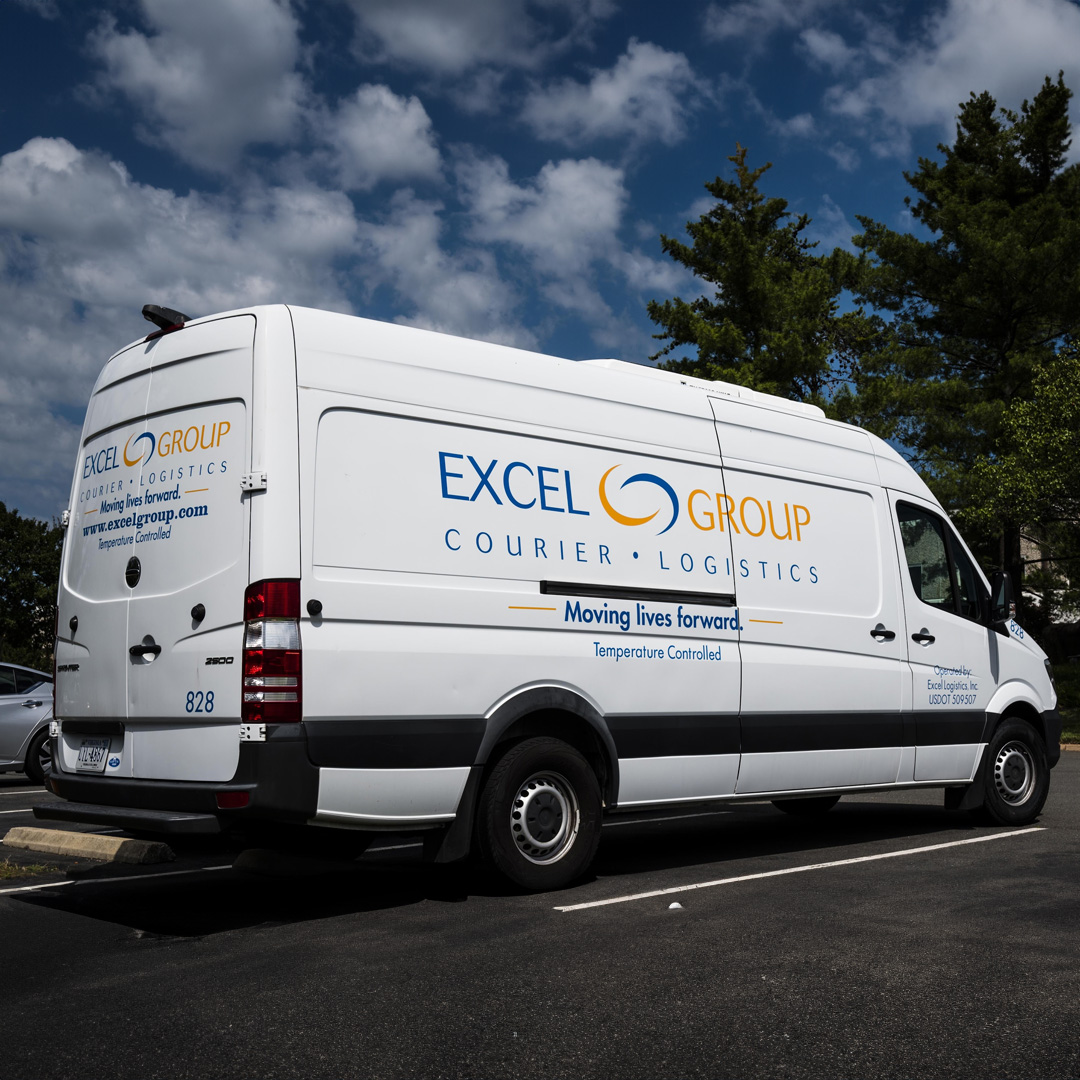
Home | News






CLDA Members are encouraged to share news about their company. CLDA may share on social media, in newsletters or on the website.

Ready to share your news with CLDA or the industry media? Learn from these tips and tricks on how to get noticed.

INDIANAPOLIS, IN, Oct. 23, 2025 – Final-mile leaders, innovators and decision-makers will gather for CLDA’s 2026 Final Mile Forum set for February 18-20, 2026. The industry’s most extensive networking and educational event will be held at the Austin Marriott Downtown in Austin, Texas.
The Final Mile Forum will offer networking with the industry’s thought leaders and innovators as well as education on supply chain trends and insights. “Anyone in or serving the final-mile industry who wants to grow their business needs to be at the 2026 Final Mile Forum,” says Conference Chair Brian Surber. “It will offer opportunities to connect with industry peers, network with top-notch experts, meet the suppliers to the industry, and gain invaluable insights for today’s competitive market.” The conference’s content will be tailored to meet the needs of:
The event’s title sponsor is Openforce, but other sponsorships are still available. In addition, a limited number of exhibitor booths are still available. Registration is now open, with discounts for registration before December 31, for multiple attendees from the same company, and for CLDA members. For more information, go to FinalMileForum.com.

Founded to help brands and delivery providers operate smarter, Finmile orchestrates the flow of parcels from checkout to doorstep. Using advanced algorithms, real-time data, and automation, the platform continuously optimizes routes, dispatches, fleet utilization, and network coordination — reducing miles driven, lowering emissions, boosting delivery speed, and improving transparency for all stakeholders.
CLDA (Customized Logistics and Delivery Association) is a nonprofit trade association dedicated to advocating, educating, and networking within the customized logistics and delivery industry. Its membership spans carriers, shippers, drivers, 3PLs, vendors, and logistics innovators. By joining CLDA, Finmile gains access to industry forums, regulatory insights, best practices, and the collective voice shaping policy and standards in delivery and logistics.
Why this matters
“We are thrilled to join CLDA as part of our strategy to scale responsibly and collaboratively. Finmile’s AI platform brings optimization and transparency to last-mile operations — but real transformation in logistics only happens when the ecosystem evolves together. Being part of CLDA gives us a stronger voice, access to critical industry insight, and the ability to partner with like-minded innovators.” — Rich Pleeth, Co-Founder and CEO, Finmile
Next Steps and Commitments
Finmile will actively engage in CLDA’s committees, forums, and advocacy initiatives over the coming months. The company plans to share case studies, best practices, and product showcases with the CLDA community — and to leverage CLDA’s network to expand partnerships, develop standards, and influence policy where delivery and logistics systems intersect with regulation and public interest. For media inquiries or further information, please contact: media@finmile.co
About Finmile
Finmile is an AI logistics platform for brands, delivery service providers, and logistics operators that unifies routing, dispatching, fleet management, and network orchestration. By leveraging AI, real-time data, and automation, Finmile drives more efficient, sustainable, and cost-effective last-mile delivery operations while improving visibility and service quality.
ASHBURN, Va. — Excel Courier, Inc. (Excel), a leading Mid-Atlantic provider of same-day, time-critical delivery and logistics solutions, has announced the acquisition of Quick Messenger Service (QMS), a Bethesda, Maryland-based courier company with more than 40 years of service in the Washington, D.C. metro area.
QMS brings additional expertise in medical and business-critical deliveries, complementing Excel Courier’s core strengths in healthcare, aviation, and professional
service logistics. Excel will take on dozens of daily routes, allowing for faster response times.
This acquisition follows Excel Courier’s recent investments in upgraded dispatch technology and operations infrastructure, aimed at improving speed, transparency, and efficiency across its service lines. By bringing QMS into its network, Excel continues to scale its on-demand capabilities and strengthen its same-day delivery capacity in a high-demand region.
“We’re always looking for ways to grow where it makes sense, and where it helps our teams and customers,” said Chris Marchetti, CEO of Excel Courier. “Bringing QMS into the fold gives us a chance to do more of what we do best, in more places, with more great people.”
Both organizations share a commitment to operational excellence and customer-focused solutions. Integration is already underway, with efforts focused on ensuring a seamless transition for clients, employees, and drivers.
“We’re proud of what we’ve built at QMS over the past four decades,” said Mark Gross, former owner of Quick Messenger Service. “Joining Excel opens new doors for our customers and drivers while ensuring the same reliable service our clients have come to expect.”
This acquisition marks another milestone in Excel Courier’s 39-year history as it continues to invest in regional growth, reliable service, and customer satisfaction.
About Excel Courier
Founded in 1986, Excel Courier is a 24/7/365 Mid-Atlantic leader in B2B time-critical logistics, providing same-day courier and specialized delivery services across the medical, parts distribution, data center, aviation, and professional services sectors. Known for its reliability, responsiveness, and precision, Excel Courier supports critical operations with a diverse fleet of over 250 drivers, ranging from sedans and vans to tractor-trailers, moving lives and businesses forward every day. Learn more at www.excelcourier.com.
Media Contact:
Casey Kilgore
Marketing Manager, Excel Courier
Phone: 703-880-1901
Workplace violence is not rare or abstract; it is an urgent, daily challenge. Every week in the United States, there are over 38,000 physical assaults on employees and 20 to 25 workplace murders (Bureau of Labor Statistics and National Safety Council). That is only the tip of the iceberg. Beneath those numbers lie countless threats, insults, and acts of bullying that create stress and fear on the job.
To help address this critical issue, CLDA has partnered with R3Results® to offer members access to a powerful training program: Verbally Defusing Violent Confrontations.
This is not just another webinar or checkbox training. It is a hands-on, research-based approach to give your team real skills for real-world situations. Your employees will learn how to spot the warning signs of escalation early, use calm authority to defuse conflict, and protect themselves and others whether on the job, on the road, or at home.
As a CLDA Member Benefit Partner, R3Results® is offering members special discounted pricing along with the ability to try the course on a no-risk basis.
This training has earned praise from top experts, including:
The course is produced to professional standards, with award-winning film crews and editors who have worked for outlets like The Daily Show, ESPN, Fox News, NBC, CBS, ABC, and PBS. It features professional actors reenacting 100% real incidents where verbal skills successfully prevented violence.
Beyond watching, your team will practice these techniques in small groups to truly build confidence and mastery.
For over 25 years, R3Results® has delivered training with rave reviews to some of the largest companies in the country.
There is also a strong business case for this training. Employee stress is estimated to cost employers up to 20% of profits, with conflict on the job being a major source of that stress. Investing in effective conflict de-escalation training is an investment in your people, your safety culture, and your bottom line.
Together with R3Results®, CLDA is committed to helping our members create safer, more respectful workplaces, one conversation at a time.
You can learn more about this training in the Member Discounts page in the Member Portal.

An experienced logistics and final-mile professional, Whitlock has been involved in the industry for five decades. He has been active in the CLDA, serving on the association’s Membership Committee, as well as participating in the ECA and the Georgia Motor Trucking Association.
CX Logistics is headquartered in Marietta, GA and has 31 locations in Alabama, Georgia, Florida, North Carolina, South Carolina and Tennessee. The company’s CX Direct division offers on-demand courier services, parcel distribution services, scheduled deliveries, and customized dedicated logistics solutions. Their CX Freight division provides scheduled service, zone skipping and on-demand freight services. Their warehouse division offers short-term or long-term storage, including storage for critical parts and facilities management. Their CX Logistics division provides a nationwide network of final-mile delivery, truckload, warehousing and nationwide logistic solutions.
An active member of his community, Whitlock participates in The Lutzie 43 Foundation, Must Ministries and the Toys for Tots program through Courier Express.
Whitlock and his wife Robbie live in Holly Springs, GA. They have two adult children.
FOR IMMEDIATE RELEASE – MIAMI, FLORIA – June 11, 2025
Announced today at the WCAworld Regional Conference in Miami, Florida, WCA eCommerce network has joined together with the World Parcel Alliance, both under the WCAworld brand, to form WCA eCommerce Solutions – a network that bridges the gap between first, middle and final mile logistics for digital commerce. WCAworld, known for being at the forefront in creating innovative networking solutions for logistics professionals, listened once again to feedback from its members to develop something that truly fulfills a need for them.
With global eCommerce sales projected to reach $6.88 trillion in 2025 and the vast opportunities that this brings to freight forwarders and couriers alike, members needed a place where they could come together to share ideas, grow their businesses and ensure they are on the front foot in finding solutions for both their business and clients. This is where WCA eCommerce Solutions comes in – to create that space where businesses can come together and grow together. The new network also welcomes Strategic Partners to join the discussion. WCA eCommerce Solutions Strategic Partners are fully vetted vendors that can support members in scaling their business, solving problems, or finding technological solutions that meet their needs.
Dan March CEO of WCAworld says “WCA eCommerce Solutions is a natural progression that has come from member-to-member interaction surrounding the growth of eCommerce and them wanting to be at the forefront of innovation and business growth in this area. Once again, we are proud that we can offer our members a solution that will lead to the continued growth of their businesses.”
For more information see www.wcaecommercesolutions.com.
CLDA has joined with several major industry organizations in support of a pivotal court case that addresses arbitration for conflicts involving transportation workers. The association is one of the signers of an amicus brief before the court that addresses this issue alongside the American Trucking Association (ATA), National Home Delivery Association (NHDA) and Truckload Carriers Association (TCA). This move aligns us with several of the largest organizations in transportation and logistics and places CLDA at the forefront of efforts to defend the business models that make the final mile possible.
This legal effort underscores a key principle for our industry: final-mile companies deserve the right to resolve disputes through arbitration rather than litigation. Arbitration protects operational flexibility, reduces costly legal entanglements, and ensures faster resolution. These benefits are critical to the success of our members.
An amicus brief allows organizations that are not direct parties in a case to share their perspective on the decision’s broader implications. By signing on, CLDA is helping to inform the court of how its ruling could impact thousands of final-mile businesses and workers across the country.
Opportunities like this are often out of reach for individual businesses but as a unified voice through CLDA, our industry can be heard. Participating in legal advocacy, like signing onto this amicus brief, gives us access to tools and channels not readily available to individual members. CLDA ensures that your interests are represented in critical conversations that shape the future of final-mile logistics.
The court will consider the information presented, potentially scheduling oral arguments, and make a decision in the case. We will keep you updated.
April 22, 2025 – NEW YORK, NEW YORK – New York City Department of Transportation (NYC DOT) Commissioner Ydanis Rodriguez today celebrated Earth Day by unveiling the city’s first microhubs, located on the Upper West Side. Microhubs are central locations where delivery trucks can unload cargo and transfer it to smaller, safer, and more sustainable forms of transportation for the final delivery, including cargo bikes and handcarts. One in five New Yorkers receive packages four or more days per week, which has dramatically increased the number of delivery vehicles on busy city streets. Nearly 90 percent of goods are delivered by trucks, and with the growth of e-commerce and demand for frequent home deliveries, the amount of goods that move through the five boroughs is expected to grow by nearly 70 percent in the next 20 years.
The first microhubs, located on Amsterdam Avenue and West 73rd Street; Amsterdam Avenue and West 85th Street, and Broadway and West 77th Street, offer dedicated space for select delivery companies participating in the pilot program, including Amazon, Net Zero Logistics, and UPS. Each of the three locations were chosen as part of NYC DOT’s Smart Curbs program on the Upper West Side.
“Over the past few years, we’ve seen a significant shift in how people shop, leading to a massive increase in home delivery that has put a strain on our streets. We’re excited about the potential these new microhubs have to better organize deliveries, while reducing double parking and easing local traffic,” said Deputy Mayor for Operations Jeffrey Roth. “We’re thankful to the many partners who have contributed to these initial pilots, and we hope it will serve as a model we can bring citywide in the future.”
“New Yorkers are receiving more deliveries than ever before, and this has resulted in a spike in delivery trucks that pollute our air and create challenges on our streets,” said NYC DOT Commissioner Ydanis Rodriguez. “These microhubs will cut down on the number of truck trips on our busy city streets and also cut down on double parking and blocking sidewalks.”
“These microhubs are going to drastically reduce the number of polluting trucks on city streets, one of our PlaNYC initiatives,” said Mayor’s Office of Climate & Environmental Justice Executive Director Elijah Hutchinson. “When we look to cargo bikes and handcarts to help with deliveries, which have dramatically increased since the pandemic, we’re cutting our emissions and reducing congestion, while also improving our quality of life by lowering noise levels on city streets.”
“Amazon is excited to join this innovative NYC DOT microhub pilot program,” said Kawaljit Singh, director, Last Mile Transportation at Amazon. “We believe this is an important step towards optimizing urban delivery for our customers, and we are eager to collaborate and contribute to its success.”
“Joining forces with NYC DOT on this groundbreaking initiative aligns perfectly with our mission to provide sustainable and efficient delivery solutions,” said Mark Chiusano, CEO at Net Zero Logistics. “We are excited to contribute to a cleaner, greener New York City while helping to alleviate traffic congestion.”
“UPS is pleased to collaborate with the Department of Transportation on New York City’s microhub pilot program,” said Dave Brennan, president at UPS North Atlantic District. “We are working with many cities around the world to promote new best practices in logistics that reduce environmental, congestion and safety impacts. We share the common goal of promoting a safer, less congested transportation environment for all users, from bikes to trucks to pedestrians.”
These are the first of up to 36 locations that will be part of NYC DOT’s microhub pilot. Locations were selected based on compatible land uses as well as proximity to high density areas, truck routes, bike lane networks, and transit, as well as through conversations with communities and businesses. The pilot will last up to three years and include on-street locations like the ones launched today and off-street locations on city-owned properties.
The Microhubs pilot program builds upon recent administration efforts to reimagine deliveries in New York City, restructure freight distribution, and create a sustainable last-mile delivery system for getting goods where they need to go, including:
Additional details on the local delivery hub pilot program are available in NYC DOT’s Microhubs Pilot report. This pilot program, created in response to Local Law 166 of 2021, is part of DOT’s comprehensive freight strategy detailed in Delivering New York and Delivering Green.
“Every day, thousands of delivery trucks clog our streets from Midtown to Upper West Side, creating gridlock, pollution, and safety hazard delivering packages and small goods ordered online,” said Congressman Jerry Nadler. “Microhubs offer a better way forward. These small urban distribution centers allow deliveries to be consolidated and completed via cargo bikes and small electric vehicles rather than large trucks. It is terrific that NYCDOT is announcing this program on Earth Day and has chosen three locations on the UWS as part of this pilot program, and I look forward to its success and expansion across New York City.”
“With the massive explosion of e-commerce and last-mile delivery challenges in the New York City, RPA congratulates the NYC Department of Transportation on launching its ‘Smart Curbs Microhubs’ pilot program on Earth Day 2025,” said Dr. Sam Bowden Akbari, director of communications at Regional Plan Association (RPA). “These three hubs, the first of many, will provide centralized locations where delivery trucks can unload cargo, dispersing it to small and more sustainable modes of transport, be it cargo bikes, trolly or hand carts. We look forward to supporting the DOT over the next three years of the larger pilot program to expand microhubs to 36 locations and help integrate them into the ‘Blue Highways’ freight management program. In combination, these efforts will help significantly alleviate congestion and truck exhaust by ramping up sustainable modes of last-mile delivery and by returning water-based freight and parcel delivery to its rightful place in the ecosystem of logistics management in the city.”
Media Contact
Mark Chiusano
Net Zero Logistics
markchiusano@avantservices.com
To kick off this year’s DC Fly-In, CLDA brought together a powerful group of transportation security stakeholders for a strategic meeting at the Washington, DC offices of our advocacy partner, Prime Policy Group. The meeting included leadership from the TSA’s Cargo Division, members of CLDA’s Air Cargo Sub-Committee, and key representatives from across the industry, reinforcing CLDA’s role as a trusted voice for customized logistics.
Representing TSA were Thomas Friedman, Industry Engagement Manager for Air Cargo, and Marc Rossi, Aviation Engagement Manager for Air Cargo & eCommerce. They were joined by Michael Taylor from the Airforwarders Association, as well as CLDA members Ralph Perrothers (On The Go Cargo), Joel Pinsky (Global Messenger and Logistics), Noah Alvarez (Alvy Delivers), David Pickerell (Gigsafe), and Paul Pantin (eZone). Andrew Terp and Casie Daughtery of Prime Policy Group also participated.
The conversation built on CLDA’s recent white paper advocating for direct regulation of Authorized Representatives (ARs), with the goal of creating more accountability and clarity across the air cargo chain. The group also discussed the critical role of independent contractor drivers in secure deliveries, the need for faster STA processing, and TSA’s ongoing technology challenges.
TSA leaders noted that, as a Congressionally mandated agency, they need legislative support to implement the proposed changes. They encouraged CLDA to seek Congressional backing to update the Code of Federal Regulations accordingly. The group also received updates on the Aviation Security Advisory Committee (ASAC), which is expected to be reconstituted by the end of the year. Attendees agreed that CLDA, AfA, and other allied associations should submit a letter to the Acting TSA Administrator addressing their concerns.
The meeting reflected a shared commitment to advancing secure, efficient logistics operations and a growing opportunity for CLDA and its members to shape the future of federal air cargo policy. Thank you to all that participated in this meeting. It is an important step forward in our relationship with TSA.
How do successful last-mile carriers continually bring in new customers? How do they attract hot leads and turn warm ones into business? By making the most of the digital marketing tools that fuel business growth in today’s marketplace.
“Thinking Outside the Box” recently interviewed Tom Lickliter, senior web strategist at AnchorWave Digital Marketing Agency. The company has played a critical part in the growth of many companies in the last-mile space. Here’s what Tom told us about making the most of today’s digital marketing tools.
Your website is your salesperson online. It’s out there working for you 24/7, 365 days. It needs to be a conversion engine. By that, I mean it needs to get people to take action when they get there.
Your website needs to speak to your audience and have clear value propositions. It should have a page that says, “Why choose us?” It needs to tell the visitor why you’re different. Don’t make the visitor think. When they land on your website, tell them exactly why you’re the company they should be working with. That’s your value proposition.
You need to identify your buyers. For those in the last mile, you must speak to those who can hire you. Make sure your content is written for them and has clear calls to action. We know that 30% of website visitors are more likely to engage with a company if they feel that content is written for them. So, by identifying your buyers and writing content for them, you’ll get more interaction.
Good websites answer questions, overcome objections, and help eliminate limiting beliefs your potential buyers might have. You know what your prospective clients think, the questions they have, and the objections they have. Answer them. They will move on to the next website if you don’t answer their questions.
Also, make sure your site includes trust symbols. These are things like the logos of the professional association you’re a member of, like the CLDA, and logos that indicate what certifications and licensing your company has. These build authority in your industry, in your space, and on your site.
Your website needs to have analytics tracking so you can see what’s working and what needs to change. Analytics can tell you who’s going to your site. Where did your traffic come from? How long did they stay? What pages did they look at? That information is very valuable to identify so you know where the most engagement is happening on your site.
Analytics also allow you to retarget those who visit your site, spend some time there and leave. Retargeting is a valuable tool for capturing the people who visit your website, look around for a little while, and leave before they take action. People go to your sites for a reason. Even if they leave, chances are they still have that need. They are what we call a “warm audience.” If you
stay in front of them with paid ads, it will make an impact. That’s retargeting. You are putting an ad back out in front of that warm audience who went to your site.
Search engine optimization (SEO) is about letting your buyers find you online. Search engines like Google don’t look at a website like you and I do. What Google looks for on a website are clues. Google is all about answering people’s questions. Giving them what they are looking for. Those “clues” help it deliver what they are looking for. If they don’t find apparent clues like “delivery” and “final mile,” Google won’t deliver your site to those searching for a final-mile provider.
Making this happen is what digital marketing agencies like ours do. It’s not something an IT person can deliver. It’s often not a website builder. Digital marketing agencies do keyword research that helps them identify the terms your potential buyers are searching for. We’ll plug those all over your site so Google can see them. If someone is searching for something like “final mile delivery near me” and your site says final mile all over it or delivery services or those key search terms, Google will see that and deliver them to your site. That’s what search engine does.
Blogs accomplish more than you can imagine. One of the things that blogs accomplish is that they give valuable information to your website visitors. Blogs also help with your SEO. Suppose somebody is looking for a final-mile courier service. Google looks at those companies with the most information about that topic, and blogs are certainly a part of that.
You should put a new blog on your site at least once a month. If someone goes to your site and you haven’t done your blogs in six months or a year, it looks like you’re not an active business. Google also gives preference to websites that offer new information. It says to them yours in an active and thriving business.
Reviews are so critical. Statistics show that 97% of people search for business online, and 93% read reviews about that business. In fact, 87% of people surveyed say that they trust online reviews almost as much or as much as personal recommendations from people they know.
These days, complete strangers are helping us make our decisions. Reviews permeate every section of society. And don’t think it’s not important in your industry. I guarantee you it is. To get those reviews, you have to ask and make it easy for your customers to leave them.
When customers tell you how great they think you are, ask them to leave a review. Many will say yes and intend to do it. But they don’t. How can you change that? Make it easy for them. Ask them in an email or text. Put a QR code button on your website. Hand out little business cards with a code that brings them right to review sites. You need to ask. Ask frequently. Ask promptly, and then make it really easy.
You want reviews in what we in digital marketing call the Big Four—Google, Facebook, the Better Business Bureau and Yelp. Yes, Yelp. Yelpers love Yelp, especially those on the East and West Coasts. Yelp is extremely popular there. As you move towards the country’s center, Facebook is a good place. Once you have those reviews, publicize them on your site.
I want to talk about Google reviews. These are number one. If someone is searching for a business, they go to Google. Good Google reviews are positive social proof.
The sweet spot for reviews is between 4.3 and 4.9 stars. If you have 480 5-star reviews, it’s suspect. No one will believe you’ve never made somebody unhappy.
So, publicize those reviews and use them in your marketing material, your website, your printed material, and any other marketing you do. After you build that reputation, you’ll get mileage from the reviews.
Also, answering reviews is super important. If you get a negative review, you have absolutely 100% need to answer that review. And do it in a very upbeat, positive manner. Nobody wins an online public argument, so be sure you answer it correctly. Don’t forget to respond to positive reviews, too. Say, thank you. It goes a long way. Let’s say somebody searches for “Carriers near me,” and somebody leaves your review and says they’re the best carrier in the state. Google sees that, and it will impact their search engine optimization.
Social media is about building a business’s trust, credibility, and brand awareness. When I go to somebody’s website or Google page, I look for their Facebook and Instagram because I want to see if they are being social and contributing to the community.
That brings up the question of how often you should post. At a minimum, it should be every three days or so. When we do it for our clients, we post every other day, but that’s what we do. We also have clients who do their own because they have somebody in-house and do it every day.
Don’t get involved with social media if you aren’t committed to regular posts year-round. You can always tell the company that’s not committed to social because all their posts are in the summer. That’s because they had an intern summer who comes in, fires it up and then goes back to college in the fall without anyone keeping it up. It sends the wrong message if people see you haven’t posted in a while.
Google My Business is SEO 101. It’s the hot ticket in SEO. If you don’t remember anything from this post, remember that Google loves Google.
Let’s start with the basics: Your Google My Business profile gives your company’s name, address and phone number. It’s like the white pages in the old phonebook. Today, you also get what’s equivalent to a half-page color ad for free from Google. You can include a ton of information in those 750 words, like the products you offer and the industries you serve. Post pictures and geotag them so people know the areas you serve. You have 750 characters that identify what you do what you do for your clients and how you help them with their business. Make sure your content here is keyword-rich.
You can also post there, just like on your social media. We do it every week for our clients, and that content is keyword-rich, so Google sees that yours is an active and thriving business.
If you invest in digital marketing, you need to do it systematically. The foundation of everything you do online starts with three pieces: your Google My Business, reviews, and a professional website.

All those pieces get potential buyers over the trust tipping point. The trust tipping point is a journey buyers go on when they are online, looking around for a product or service. When you develop that trust with the evidence they need, you build the foundation of trust that turns them from people searching for information to buyers.
Get your company a digital strategy tailored to create trust. First, put the foundations in place—your website, Google My Business and your reviews. Every pyramid needs a solid foundation. Build those up, and they will drive business to your bottom line.